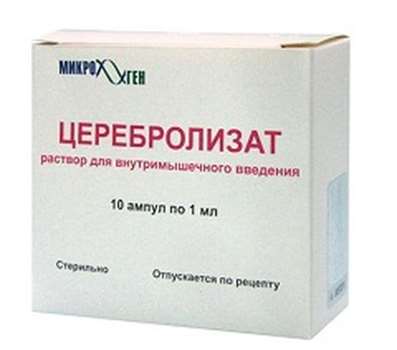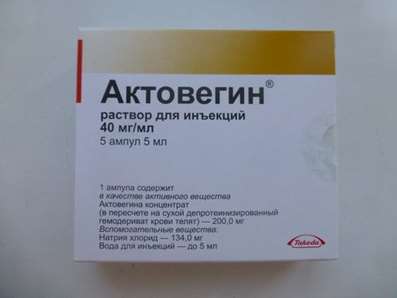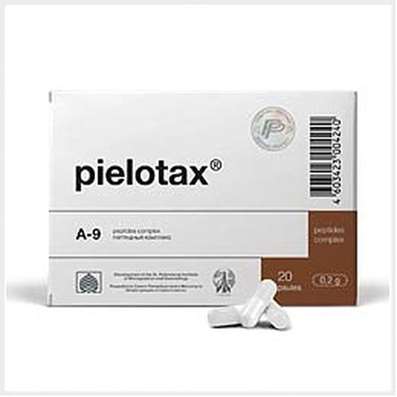Anabolic steroids: side effects on heart
29 Nov 2016
The purpose of this article is coverage of the topic of direct and indirect impact of the anabolic androgenic steroids (AAS) on cardiovascular system, will consider and we will generalize the actual data concerning consequences of reception of AAS on warmly - vascular system and we will sound prophylaxis measures.
Direct influence of AAS on warmly - vascular system.
Infarct. Histological changes.
In a research of 2005 spent to the USA two real cases of the sudden cardiac death at young male athletes bound to abuse of AAS were considered. In both cases people had no the burdening anamnesis concerning cardiovascular system. Opening of hearts of athletes showed focal fibrosing of a myocardium that speaks about preliminary damage of a myocardium. Also the reasons of a sudden cardiac death of the sportswoman who is going in for fitness, using steroids and ephedrine were studied. When opening several small centers of tissue which were treated how the certificate of an early necrosis of a myocardium were revealed. A sudden cordial arrhythmia as a result of inflammatory processes and a fibrosis of a myocardium were a presumable cause of death in all these cases. A large number of researches also reported about the sudden cardiac death bound to reception of steroids where the myocardium fibrosis in the absence of the burdened anamnesis was also found. And still it is worth noticing that probably damage of a tissue of the myocardium received without immediate participation of AAS was the cornerstone of a pathogenesis, but they in turn framed a favorable background for development of cardiac pathology.
Heart hypertrophy
Several researches showed that the athletes using AAS have the reduced diastolic volume, thicker back wall and an interventricular septum, and also larger mass of a left ventricle, unlike the athletes who aren't using AAS. Cordial muscle cells have receptors sensitive to androgens, and AAS are capable to cause their hypertrophy, affecting immediately cells. The problem is that the hypertrophy of a left ventricle can remain after the termination of reception of AAS.
Depression of heart function
Echocardiographic research of 47 persons, 28 of which AAS regularly used, showed lower systolic function in group of users of AAS, than at not using. Besides, showed fraction of emission of 58% against 63% - respectively. Also, by means of dopplerography, signs of decrease of diastolic function were taped (heart was more weak and more rigid).
Disturbance of lipid profile
A large number of researches was shown that AAS can lead to rising of cholesterin and dislipidemia at the expense of augmentation of lipoproteins of low density, more than to 596 mg/dl and depression of lipoproteins of high density to 5 mg/dl. Change of level of lipoproteins happens depending on a dose of steroids during nine week courses. These changes in a long-term outlook can accelerate development of an atherosclerosis of a coronary artery that leads to augmentation of risk of development of coronary heart disease by 3-6 times. Influence of androgens on lipid profile as it was established, is reversible after phase-out.
disturbance of blood pressure
Anabolic steroids are capable to enlarge a reactivity of a vascular wall by Noradrenalinum, to enlarge activity of a renin of plasma, to stimulate production of Aldosteronum and to enlarge a sodium delay kidneys. As a rule, this problem is dozozavisimy (a dose = effect). Influence of steroids on blood pressure can remain for a long time; some researches showed permanent rising from 5 to 12 months after the termination of reception of steroids. Certainly, additional researches are necessary to tap communication between AAS and arterial pressure. Often, a hypertonia problem - administration of drugs with the increased conversion in estrogens or having estrogenic effect.
Cordial arrhythmia
The sudden cordial arrhythmia as a result of inflammatory process and a fibrosis of a myocardium is a presumable cause of death at the athletes using AAS. Prolonged use can be the cause of changes in a myocardium electrophysiology that contributes to the Re-entry mechanism ("a repeated entrance of exaltation").
Also change of an interval of QT at the persons abusing androgens was revealed. Presumably, anomaly of repolarization of ventricles which can enlarge risk of cordial arrhythmias and a sudden cardiac death takes place. The ciliary arrhythmia secondary, in relation to high doses, the steroids presented in two cases where athletes used AAS has no other known reasons of fibrillation of auricles.
Myocardial infarction
The sudden cardiac death is secondary in relation to a myocardial infarction. The cases bound to use of anabolic steroids at earlier healthy athletes were registered, however, it is necessary to notice that it were separate very exceptional clinical cases. And more randomized researches weren't conducted to check results.
Influence of AAS changes body height of endothelial cells with strong anti-proliferative action, induces an apoptosis, and changes levels of an intracellular calcium. These endothelial changes can be considered as factors which contribute to serious damages at the level of cells of vessels. Androgens are capable to worsen the vasculomotor arterial answer, to enlarge the content of collagen and other fibrous proteins in an arterial vascular tissue that worsens a stream - mediated, an endothelium - a dependent vazodilatation. These changes can be normalized after the termination of reception of AAS. Besides, pilot studies showed that androgens strengthen aggregation of thrombocytes in a test tube and under natural conditions. Androgens can exert the impact on thrombocytes by impact on system of Prostaglandinums and lead to augmentation of production of thrombocytes of tromboksan of A2 (the potent aggregator of thrombocytes), reducing production of a prostatsiklin (I2 Prostaglandinum, an inhibitor of aggregation of thrombocytes) and rising of level of a fibrinogen. They also enlarge density òðîìáîêñàí A2 of a receptor of thrombocytes and their aggregation.
Above-mentioned physiological changes contribute to higher risk of a myocardial infarction.
Also it was established that the tensile properties of an aorta decrease at athletes who use AAS. The Rigidity of an Aorta (RA) at the expense of load augmentation at ventricles contributes to development of a hypertrophy of a left ventricle, develops dysfunction of a left ventricle, a heart failure, and also breaks balance of the consumed and received oxygen. Also ZhA leads to pressure decrease in an aorta during a diastole that reduces pressure of coronary perfusion and promotes a myocardium ischemia, even for lack of atherosclerotic narrowing of a coronary artery.
Treatment and prevention
Now we know enough about risks which the person can face at reception of anabolic steroids. It is worth noticing that the probability of development of some pathologies is very small. To prevent the listed problems, the most important action is obligatory regular monitoring of health and appropriate well-timed therapy in case of problems. Let's allocate the main disturbances CCC from reception of AAS and a measure of their prophylaxis.
1. DISTURBANCE OF THE CORDIAL METABOLISM
Prophylaxis:
- Trimetazidin
Normalizes a heart metabolism, improves its delivery at the cellular level and has the expressed protective effect which is proved by numerous researches.
Improves a coronary circulation and metabolic processes in a myocardium. Possesses anti-hypoxemic action.
- Panangin (asparkam).
Is a source of a potassium and a magnesium. These ions positively influence heart, reduce the frequency of reductions and eliminate cramps.
- Vegetable adaptogens
Rhodiola pink, levzeya saflorovidny, a hawthorn - also have cardio protective effect.
Dietary supplements (Q coenzyme, omega-3, 6, 9)
The coenzyme of Q (CoQ10) is vitamin like substance which can be found in all cells of an organism. The coenzyme of Q (CoQ10) is an integral part an electron - a transport chain. He acts as a carrier of electrons that is extremely necessary for production of ATP. Researches show that the coenzyme of Q (CoQ10) can work as an antioxidant, promotes purification from free radicals and restores other antioxidants – vitamins E and C.
2. DISTURBANCE OF THE LIPIDE PROFILE
Prophylaxis:
Acidum lipoicum
Is a coenzyme of oxidizing decarboxylation of pyruvic acid and alpha ketoacids, normalizes power, carbohydrate and lipide exchanges, regulates a cholesterin metabolism. Improves functions of a liver, reduces the damaging influence on it of endogenic and exogenous toxins.
Omega 3 fatty acids
Normalizes structure of LPNP and LPONP, changes liquid properties of membranes of cells and increases functional activity of receptors, promotes improvement of interaction of lipoproteins with enzymes and causes gipolipidemichesky effect. Reduces the content of arachidonic acid and enlarges the level of eykozapentayenovy and dokozageksayenovy acids in membranes of thrombocytes. Besides, slows down synthesis of a tromboksan of A2 and eicosanoids which strengthen a thrombogenesis, also stimulates formation of a tromboksan of A3 and eicosanoids of the E3 line which don't have pro-aggregation effect. Synthesis the vazodilatatornykh of PG, activates release of an adenosine (but not Noradrenalinum) and suppresses transport of an intracellular calcium that activates vasodilating and hypotensive properties.
Statines (atorvastatin, lovastatin, rozuvastatin etc) are applied to treatment of dislipidemia at essential rise in level of cholesterin.
3. CHANGE OF RHEOLOGICAL PROPERTIES OF THE BLOOD.
Prophylaxis:
- control of blood tests (hematocrit)
- use of antiagregant
- Pentoksifillin
Inhibits phosphodiesterase, stabilizes tsAMF and reduces concentration of an intracellular calcium. Blocks adenosine receptors. Slows down aggregation of thrombocytes; increases their fastness to deformation, improves rheological properties of a blood, suppresses a thrombogenesis and normalizes microcirculation. The anti-anginal effect (augmentation of delivery of oxygen to a myocardium) is caused by expansion of coronary arteries. Dilatiruyet vessels of lungs also improves an oxygenation of a blood. Raises a tonus of a respiratory musculation (intercostal muscles and a diaphragm).
4. HYPERTONIA
Prophylaxis:
- Control of level of hormones (estrogens, glucocorticoids, etc.) and their precursors.
- Control of reception of salt and carbohydrates with high GI.
- Liquid reception control.
- Control of hematocrit
- Regular monitoring of the ABP
- And don't forget the most important about aerobic trainings. Thanks to them you will not only get rid of excess fat, but the most important — them you support healthy CCC.
1. It is possible to refer improvement of work of heart to advantages of an aerobic training and lungs, a lowering of arterial pressure, activization of a metabolism, immunity strengthening, rising of a self-rating and level of resistance to stress. This type of physical exercises is one of the most important components of maintenance of health and cheerfulness. The purpose of aerobic trainings is in forcing lungs to enrich a blood with a large amount of oxygen. Further oxygen together with a blood gets into muscles where it is used for obtaining energy. The aerobics increases the content of oxygen in a blood
2. The aerobic training in the first 1-2 weeks leads to dropping of a cordial rhythm at rest on 1 reduction a minute.
3. The heart training the mild restoring loads after the postponed heart disease guarantees fixing of results of treatment at least for 2 years.
4. Aerobic trainings do cordial reductions at rest not only more infrequent, but also more potent. According to scientists, aerobic trainings 3-4 times a week lasting 15-60 minutes have the best result. Level of pulse of-60-90% from maximum (220 minus the age expressed advanced in years).

 Cart
Cart





